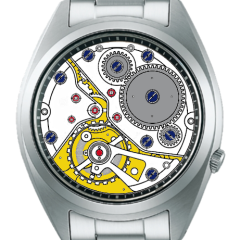Rolex Balance Low Amplitude Watch Run Slow?
-
Recently Browsing
- No registered users viewing this page.
-
Topics
-
Posts
-
From what I see, the crystal is made of mineral glass and is secured to the bezel with a sealing ring. If you might want to replace the crystal without removing the bezel or the movement, I think it's possible, but risky. You have to suck out the old crystal without breaking it into tiny particles. I would not do that. If you remove the movement first you can press the crystal out and press a new one in without removing the bezel.
-
By Sebastiaan · Posted
Hello Everyone, A short message to introduce myself. I'm Sebastiaan (50) from the Netherlands and have always been interested in watches. My two kids are at the end of their teens years and so I have more time to start a hobby. Working on watches was something I always wanted to learn. So I recently started the watchfix repair course. Currently watching level 3. My short term goal is to be able to service the watches we (Myself, my wife and kids) own. I own a manual Omega Geneve from 1974, a small microbrand watch with a NH35 and a wittnauer bumper from 1940's. My wife owns an Oris, Seiko 5 with 7s26c and my son a seiko alpinist sarb017 and sports 5 with 4R36. So enough to learn on the short term.. Looking forward to talking to all of you and enjoying the watch hobby together. Greetings Sebastiaan -
It works quite well. The only strange thing is that it loses 2/3 mn per day whereas the measurements indicate that it is fast by 1/2 mn. Maybe something wrong with the gear mechanism ...
-
Unfortunate…but you clearly have a Longines branded movement with a year 1936 serial consistent with the caliber. I checked the case maker of the last few Longines I worked on… …same as your watch, so certainly you have grounds to honestly describe your watch as a Longines cal 25.17 tank with unbranded dial…and given the modesty of the watch IMO the Longines authentication wouldn’t dramatically alter the value, if that’s what you are hoping…as nucejoe suggests the value will mostly be determined by how well it runs…
-
It's difficult to tell, but my guess is it just looks like it has a bezel. Once you have removed the movement, you should be able to tell. Either way, I think you should be able to press out the old crystal from the inside as long as you have a die that properly supports the area around the crystal. So, take it a part first and then assess if any additional tools or actions are needed. Let us know how you do!
-






Recommended Posts